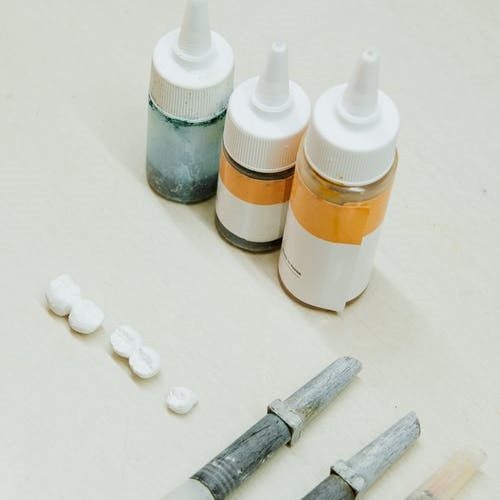Fatal Pill: How Can Intellectual Property Save Your Life
- October 19, 2022
- Posted by: Nermien Al-Ali
- Category: Learning Center

When the fake or counterfeit product is a medicine, counterfeiting becomes more than just an unlawful activity. It becomes a social evil that causes health problems and injuries and even causes death. Maybe you find it hard to imagine that there are people who would fake medicine to make an illegal profit, since they may find themselves one day in the patient’s chair. The truth will shock you.
Counterfeiting of medicines is a global problem, which is most rampant in underdeveloped countries like Western Africa, and developing countries like Egypt. The World Health Organization estimates counterfeit medicines make 8% of the global market, amounting to around $375 billion. 70% of these counterfeits and substandard medicines are sold in developing countries. The Food and Drug Administration (FDA), United States, estimates that 25% of medicines sold in developing countries are counterfeits or substandard. This percentage rises to 40% in Argentina, Mexico & Colombia and to 70% in West Africa.
The results are drastic: therapeutic failure, allergic adverse reaction, blindness and even death. Fake medicines gave rise to resistant forms of microbes, and the spread of fatal diseases resulting in over 260,000 deaths between 1996 and 2001– almost all in third world countries.
Counterfeit medicines are not only fake replicas of popular medicines like Viagra – one of the most counterfeited product in Egypt and worldwide; but also include substandard generic products which do not contain the right composition of, or entirely lack, the active ingredient. They also include genuine medicines that have been tampered with like Lipitor in the U.S., where Lipitor tablets were replaced with fake pills.
So far, a number of measures have been taken but the problem is far from solved. This is due mostly to:
- Lack of adequate government resources to investigate, seize and examine samples in the market. Even government agencies like the FDA in U.S. often complain of lack of resources to conduct adequate investigations. In developing countries, numerous cases reported by pharmaceutical companies are usually addressed through a mere warning note to pharmacists about the counterfeit.
- Low reporting of injury and death caused by fake medicine. In many situations such information is suppressed for fear of blame and to avoid a public panic.
- Lack of strong deterrents of the criminal activity. Australia is one of the countries that addressed this by passing tougher measures against medicine counterfeiters such as imposing life imprisonment and allowing the authorities to confiscate and destroy counterfeit medicines without a judicial order. For most other countries, the only protection is provided by intellectual property law.
Intellectual Property Law Can Help
Intellectual property is seen mainly as a tool for businesses to protect their investment in trademarks, business names, inventions and artistic work. However by holding manufacturers and suppliers liable for the quality of their products, intellectual property provides the strongest form of consumer protection as well.
The balance between the private and public interests is what makes intellectual property law a guardian of lives and safety when it comes to fighting counterfeit medicines.
Though the protection of public health and safety falls in the realm of governmental responsibility, it is unrealistic to think that government agencies in developing countries like Egypt can allocate sufficient resources to fight the counterfeit mafia on their own. Pharmaceutical companies, whose medicines are being counterfeited, can play a major role as well. After all, it is their trademarks that are being robbed and tarnished by counterfeits. Government agencies and pharmaceutical companies need to work hand in hand. Although pharmaceutical companies may file an infringement complaint against a counterfeiter to protect their investments, keeping counterfeit medicines off the market depends on the authorities.
Pharmaceutical companies need the law enforcement arm of the government to investigate and prosecute the counterfeit activities, and the government needs the pharmaceutical companies to keep a vigilant eye on the market and report any sign of counterfeiting. Indeed, all national and international resources are needed to fight a problem of this magnitude. Counterfeiting medicines involves many players, ranging from manufacturers, distributors to vendors who knowingly sell fake medicine to unwary consumers. These players are often spread over more than one country giving this crime a global reach. That’s why the Interpol, World Customs Organization, World Intellectual Property Organization, and officials from almost all countries join forces. However, despite the efforts of these organizations to eradicate counterfeits, action by local authorities and pharmaceutical companies still holds the greatest hope.
US Food & Drug Agency Campaign against counterfeit medicine in 2017

Action Plan Against Fake Medicines in Egypt
Government should:
1. Impose severe sanctions against medicine counterfeiters;
2. Allow the immediate confiscation and destruction of counterfeit medicines.
3. Collect information about the magnitude of the problem.
4. Cooperate with international bodies as well as local pharmaceutical companies
Pharmaceutical companies should:
1. Devise a product plan for each medicine to be launched in the market with adequate advertising to alert the public to the tamper-free features of the genuine product.
2. Report any unauthorized use of their marks by another party – in this case the counterfeiter – to the Ministry of Health and the Supply Investigation Unit.
3. Take all necessary steps to protect their brands and other intellectual property fiercely, against any attempt by counterfeiters to jeopardize patients’ lives and health.
NAL LAW Group can help, visit www.nal-law.com
